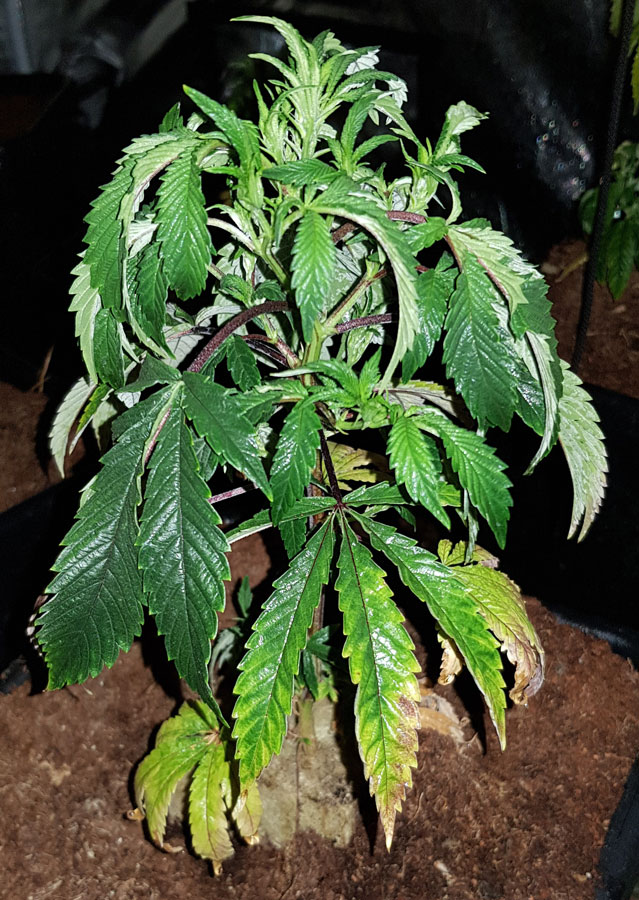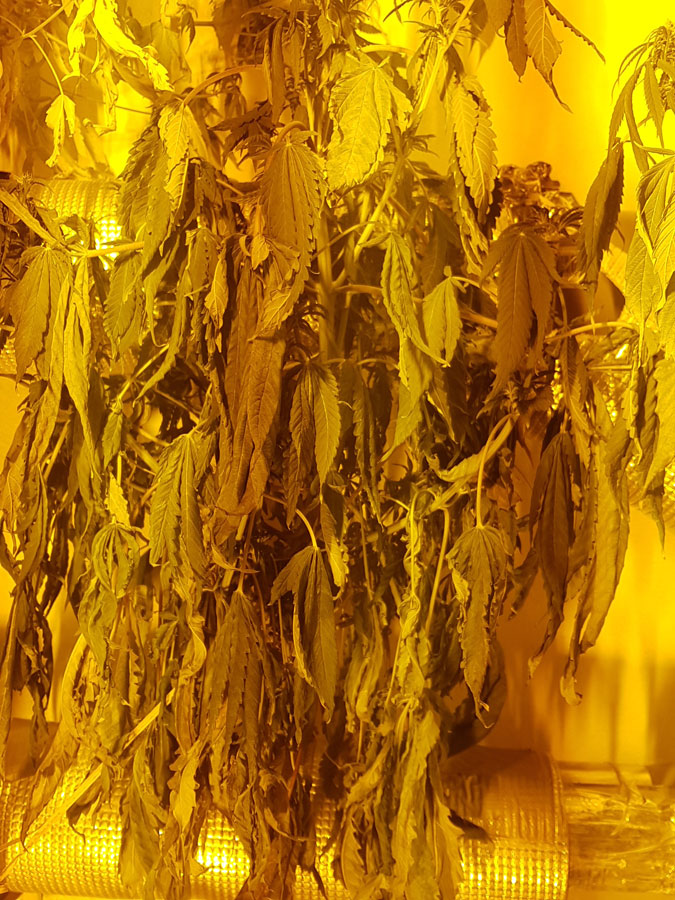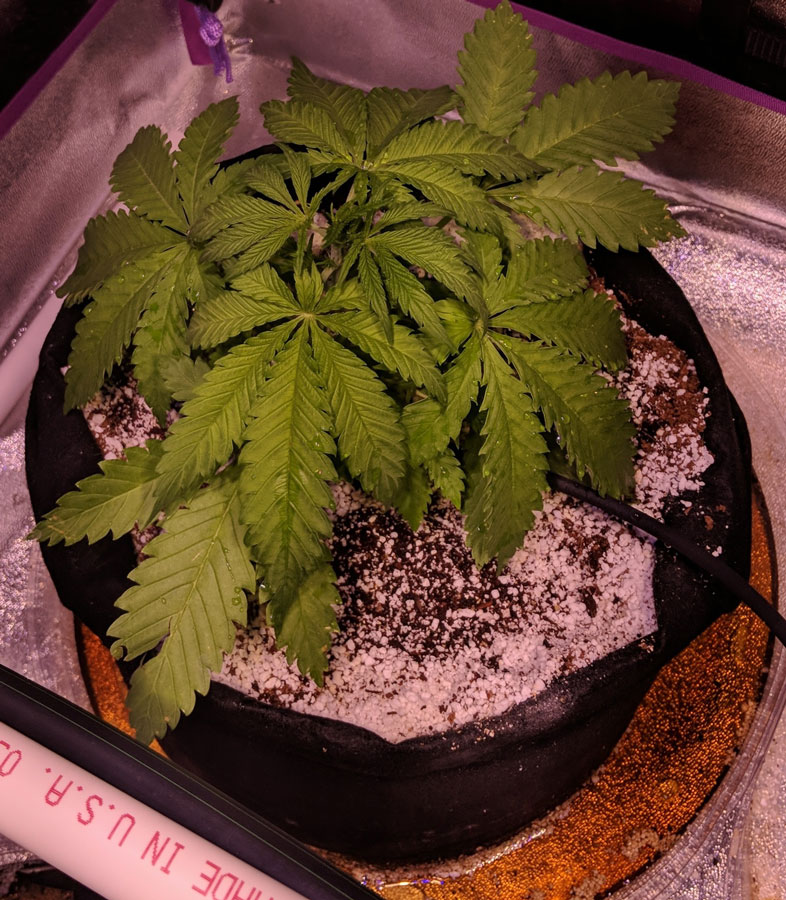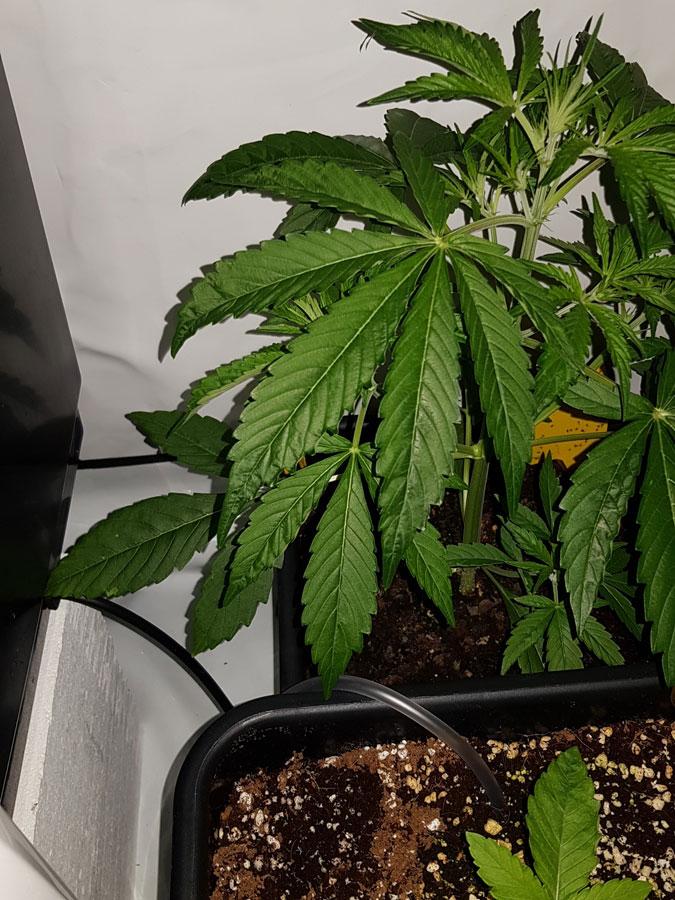Watering right – a key factor for a successful cannabis cultivation
November 24, 2019, 5 min. readWithout water there is no life… but what happens when there’s too much water? Weed plants are pretty robust, but wrong watering can make or break your grow. In this article we’ll cover the all-important subject of cannabis watering. Understanding the components that affect the water content in your plant, and knowing how to spot water shortage or excess, will help you grow stronger, healthier plants, with higher yields.



Too little or too much water – both are bad for your plant
When there is too little water, some of the plant’s major systems are hurt. Water is needed for photosynthesis, as the plant uses light to split water molecules as part of the flow of energy leading to carbon assimilation. Water is also important for structural support of the plant (turgidity), this is why plants wilt (or “droop”) when they are water deprived. Additionally, water is the medium by which different compounds in the plant move around – nutrients from the root up, sugar from the leaves down, etc. Therefore, having a shortage of water hurts the plant systemically (the entire plant at once) – and a rapid process of decline begins, causing the plants to wilt, yellow, and become sensitive to pests and diseases.
Everyone knows plants love water, and cannabis plants are no exception. But unintuitively to most, having an excess of water can really hurt your plant. Most plant roots - including cannabis roots - need to have access to fresh air to stay healthy. The oxygen in the air helps to keep the root microbial population balanced, to the level they are still beneficial to the plant. When too much water is added to the soil until it becomes soaked, the air is pushed out of the growing medium and is blocked from reentering. This creates an anaerobic environment which promotes the growth of harmful bacteria, leading to “root rot”. This is a disease in which a plant’s roots are attacked by massive amounts of bacteria and start to die. With dead roots, the plant has nowhere to absorb water and nutrients from, to the point it appears “thirsty” and starts to wilt. Untreated root rot leads to slower growth, lower yields, and possibly plant death.
Therefore, it is imperative that growers keep marijuana plants at an optimal watering regime, starting by building the right environment.
From the ground up – build the right environment
Soil content – the soil, which ultimately holds the water and fertilizer content the plant is meant to absorb, is crucial for a successful grow. There are many different options to choose from, but a standard garden mix should do the job. If you’re unable to get a cannabis-specific soil mix, ask your local garden shop for a mix best suited for tomatoes. In addition to the standard mix, we recommend adding perlite, styrofoam or rice hulls. These aerating materials increase airflow through the soil and help make the watering process easier and more efficient. The suggested ratio is about 1 bucket of aerating material to two buckets of soil. Use a big tub-like container, pour the soil and aerating material, add water (about half a bucket of water per bucket of soil), and mix thoroughly until you get an even mix. Transfer the fresh mix into clean pots.
Pot size – Choosing the right container depends on your grow setup, as space and price are part of the deciding factors. If the pot is too small, the root system will be constrained by it, limiting the size the plant could reach. If the pot is too large, it will take up unnecessary space, and will require more water for irrigation, due to excessive drainage and evaporation. Large scale growers use tiny pots for seedlings and clones, then transfer the plants to larger and larger pots (2-3 times) as they grow, to maximize grow space and irrigation. If you don’t have the capacity to transfer the plant throughout its life, and expect your plant to reach up to 3 feet, 3-gallon pots are probably your best option.
Temperature and airflow – The air around your plant has a large effect on water consumption. For example, indoor pre-flowering cannabis plants grow under 18 (and sometimes 24) hours of light for many weeks, raising leaf and soil temperatures, increasing evaporation. In such conditions, it is important to ventilate the grow space and introduce cool air to reduce the temperatures. The catch is, the airflow also increases evaporation! This means that even if the high temperatures were mitigated by increasing airflow, the plant will still need to be watered more.
Humidity – A crucial factor for irrigation which is many times over-looked. In high humidity there is less evaporation, meaning you’ll have to water less or less often. Keep in mind that the recommended air humidity is 60% RH through most of the plant’s life, higher than that, and the risk of mold increases. However, if the air is very dry, evaporation will increase, and more watering will be needed. If you don’t already have one, we recommend getting a simple RH reader.
Listen to your plant
Be aware of the growth stage – The cannabis plant behaves differently during its different grow stages. A mature flowering plant will naturally consume a lot more water than a young seedling. Seedlings dry out quickly and therefore demand more attention. Depending on the environment, seedlings may need to be watered twice a day, but only with a small amount (roughly half a cup of water) each time. Larger plants, on the other hand, should be watered every 2-3 days and be allowed to dry out slightly. This gives the roots a chance to breathe and expand as they look for a water source.
Look at the leaves and feel the soil – The are clear symptoms in your canopy that provide a useful tool to help monitor your plant’s water status. If your plant shows signs of drooping (wilting) under normal temperatures, it usually means that you are over or under-watering your plants. A combination of drooping and yellowing leaves suggests the plant is underwatered.
An easy technique to know when to water your plants again is to stick a finger in the soil, about 2 inches deep. If the soil feels completely dry, then it’s time to water. If the soil is still wet, you can wait and check the next day. Thick, damp or muddy soil, which its top layer has not dried in a few days, can be a sign over-watering or poor drainage. This may lead to nutrient imbalance and a pest infestation and should be corrected. You can also use a Soil Moisture Sensor Meter for an accurate reading.


Under-watered plants


Over-watered plants images
How to add water correctly
Water quality – Once you decide your plant should get the water it needs, make sure you are adding clean water with the right chemical composition to keep your plant healthy. Whether you are adding a water-nutrient mix (see separate blog on fertilization – coming soon) or just plain water, you’ll need to make sure it doesn’t contain any harmful microbes or unhealthy chemicals.
A basic rule of thumb is to add water from a source you trust, and test the water if you can. Pure mineral water, or high-quality tap water can work perfectly fine. In case you don’t have access to those, consider buying purified water or purifying them yourself through a simple 3-part filter system. Industrial growers often use reverse osmosis (RO) systems for higher purity. However, be careful not to add purified water directly to the plant before balancing their salt content – the low concentration of ions can harm the plant.
Chemical content – The first thing to consider is the pH, which is an indicator to a solution’s acidity or alkalinity, in a scale of 1-14. Pure water has a neutral pH of 7, while acidic solutions have lower pH and alkaline solutions have higher pH higher than 7. A pH meter is an essential meter for any serious grower. As you add fertilizers or nutrients to your plants, you may notice an increase or decrease in the pH level of the soil or water. The ideal pH value for cannabis plants, which varies with different growing conditions, is slightly acidic, and should be between 6 to 6.5. Within this range the plant has access to a substantial amount of nutrients necessary for healthy growth.
EC, or Electrical Conductivity, is how the grower gets the most accurate reading of nutrients in fertilizer solutions and the growing medium itself. This value is naturally affected by the fertilizers added to the water, and most times the water itself. You’d need a dedicated EC reader to know its levels. Tap water, for instance, commonly has a relatively high EC caused by Calcium and other soluble ions, and should be accounted for when adding nutrients to your mix. The ideal EC range for cannabis plants is 0.8 - 1.7 during the vegetative phase, and 1.2 - 2 during the flowering period. Maintaining these values is crucial to ensuring the uptake of new nutrients.
Water delivery and timing – Once you prepared water for irrigation, the simplest technique for delivering them to your plant is pretty straight forward. We recommend pouring your either clean or nutrient-rich water over the entire surface of the grow medium. Water thoroughly until you see excess water drain from the bottom of your plant. Allowing 10-20% runoff ensures the water will be evenly distributed throughout the root system. The ideal time to water is in the morning, or as soon as the lights turn on for indoor growers. This helps improve nutrient absorption and reduce the chance of mold.
A more sophisticated way to water, is using drip irrigation system and a controller. We are big fans of this technique, which is more relevant for medium to large-scale grower. The benefits of drip irrigation are numerous: uses less water, reduces evaporation, reduces manual watering labor (and human error), and enables the use of complex watering plans for improved plant performance (e.g., micro-irrigation multiple times a day). However, drip irrigation can be intimidating because of the system’s initial cost and the knowledge needed to operate it. Even though it reduces expenses on water, nutrients and labor, and has low maintenance and operation needs, some growers can’t (or won’t) make the initial investment needed to install drip irrigation. Luckily, some water-scarce municipalities (like Humboldt county in California) see the water saving benefit of drip irrigation and require local cannabis growers to use it.
Irrigate with intent for a better cannabis plant
We hope this information will help you to maximize the potential of your precious crop. Here at HiGrade, we believe in empowering growers to enable safe and affordable access to the best medicine possible. This is why we developed the HiGrade app, please check it out.
Here are the main takeaways we hope you use with your future cultivation:
* Watering can be tricky, be careful not to over-water your plants;
* Correct watering starts with creating the right environment;
* Look at the plant and feel the soil to understand real-time water content;
* Pay attention to the water composition and the way you irrigate.
Feel like you need an extra pair of eyes to help you make the right call?
HiGrade will accompany you during the entire cycle of your grow. Using our expert analysis will help you determine the ideal harvest time, along with any questions or concerns you may have during your cultivation.
Share this post:


